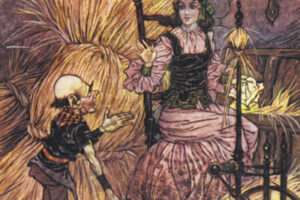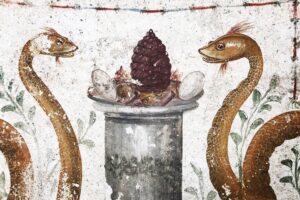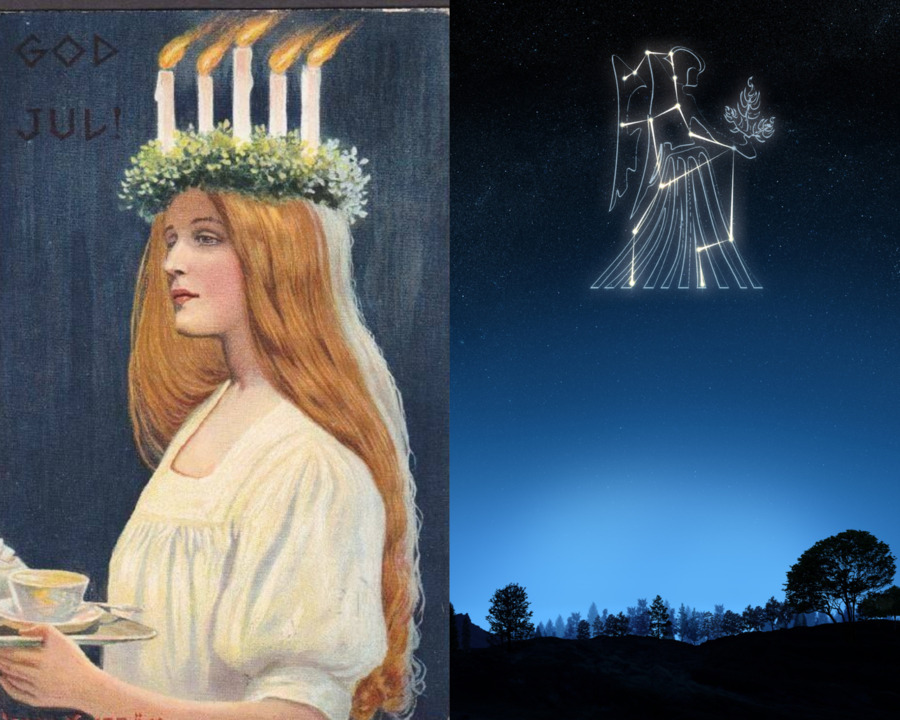
Saint Lucy, the light of the winter solstice
Saint Lucy, the light of the winter solstice
by Hasan Andrea Abou Saida
According to popular legends and the cult of saints, 13 December is one of the most important and cherished days of the year dedicated to the Virgin Mary Lucy. The origin of the feast, however, predates Christianity and goes back to the most remote and ancestral times of our Italic past. The story of St Lucy has been handed down from two ancient and distinct sources: one is the Passio from the Greek codex Papadoupolos, while the other is the Latin writings known as the Acts of the Martyrs, a fictionalised version full of legends about the lives of saints from the early centuries. These two sources tell of a young girl named Lucy, born at the end of the 3rd century AD, into a noble Christian family in Syracuse. After helping her mother Eutychia to heal through the intercession of Saint Agatha, during a pilgrimage to the tomb of the Catanian saint, Lucy decided to consecrate herself to Christ, to vow her virginity and to donate her wealth to the poor, to serve and help the sick, the needy and the widows of the city. Because of Diocletian’s edicts aimed at persecuting Christians, Lucy was denounced to the prefect by her rejected suitor and later subjected to torture. Accused of practising witchcraft, Lucy was sprinkled with oil, placed on wood and tortured by fire, but incredibly the flames did not touch her; she was finally brought to her knees and decapitated, or according to Latin sources, a dagger was stuck in her throat (jugulatio), dying a martyr’s death around 304 AD in Syracuse. Lucy was immediately venerated as a saint by the people of Syracuse after her death, and her remains, still kept in the Sanctuary of Lucy in Venice, became an object of deep adoration and pilgrimage. Syracuse therefore became the main centre of her cult and the people of Syracuse named the martyr patron saint of the city 1.
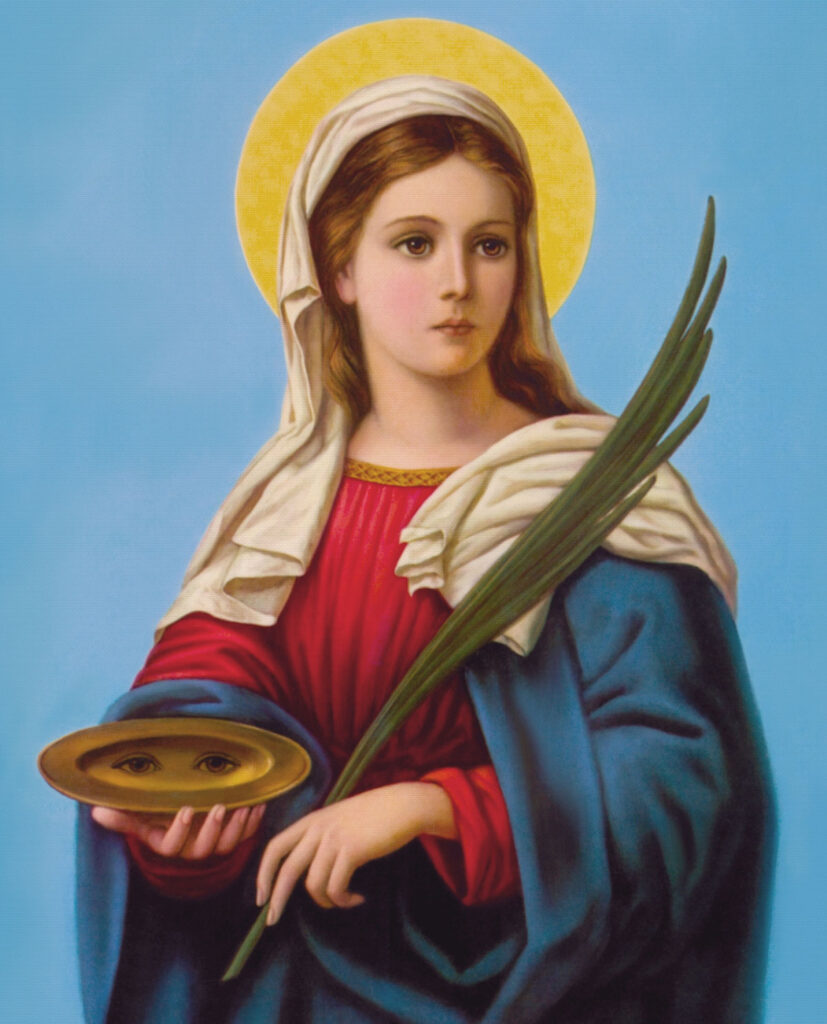
The memory of his death falls on 13 December, a date traditionally linked to the winter solstice. Before the introduction of the Gregorian calendar in 1582, 13 December coincided with the winter solstice (now changed to 21 December), a sacred moment celebrated by pagan cults before the advent of Christianity, but which has survived in the rites and ceremonies of Italian folk tradition 2. The name of the saint evokes her symbolism: the name Lucy derives from the Latin Lùcia, feminine of Lùcius, whose root is lux, lucis, or “light”, meaning “luminous” or “shining”. The main element of the festivity is both material Light, in connection with the Sun and its cycle of rebirth, and spiritual Light, where each of us travels to rediscover our inner luminosity during the darkest time of the year. Confirming the connection with the solstice period, several popular proverbs were born, such as “Santa Lucia is the shortest day there is” and “From Santa Lucia to Christmas the day lengthens a dog’s stride”, where the saint acts as a “messenger of light”, announcing the end of winter darkness and the reawakening of sunlight. This quality of the saint is also linked to a legendary episode described in 15th century hagiographic sources, where the girl had her eyes plucked out (or plucked them out herself). On a symbolic level, Lucy is the patron saint of light, of ophthalmologists and eyes, the protector of diseases of sight, of the blind and of electricians 3.
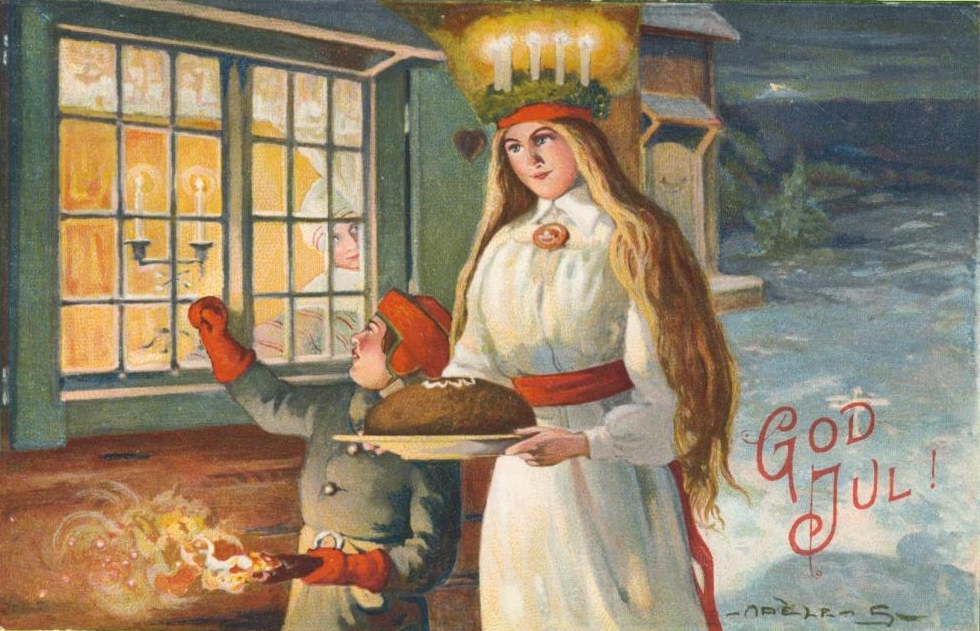
The cult of Saint Lucy is therefore the manifestation of ancient pagan cults celebrated in Syracuse, and in particular connected with the divinity Artemis. The Greek goddess of the moon, wild nature and hunting, Artemis was particularly worshipped in Syracuse and the island of Ortigia was sacred to her, as to Saint Lucy. The Artemision, the temple consecrated to the goddess Artemis and located on the highest point of the island, was built by the Gamoroi, descendants of the first Greek colonists of Corinth, to honour the Greek patroness of Syracuse, but according to scholars it was never completed. The goddess was invoked as the protector of women during childbirth and was also connected to moments of profound individual initiation and transformation (birth, death, marriage, entry into adulthood) and to the lunar cycle 4. In the Temple of Artemis in Ephesus there was a statue where she was depicted with hundreds of breasts as a great mother-nature, divine nurturer and giver of life. According to some scholars, the etymology of the name Artemis derives from the Persian root *arta, meaning ‘great, sacred, excellent’, identifying her even more as the Great Mother of Ephesus. One of her epithets, reported by Homer, was that of potnia theron, ‘Lady of the wild animals’. In Greek mythology, Zeus fell in love with the goddess Latona, daughter of the titan Ceo and the titanid Phoebe, and at the moment of their union, the father of the gods turned Latona and himself into quails, in order to hide from the sight of Hera, Zeus’ wife. But Queen Hera finally discovered her husband’s betrayal and punished Latona, who was pregnant with twins: she sent the serpent Python to persecute her, preventing her from giving birth anywhere the sun shone. After a long journey in search of a place to give birth to the twins, Latona arrived on the barren island of Ortigia. Here she gave birth to Artemis who, as soon as she was born, helped her mother to give birth to her twin brother Apollo in the city of Delos. For this reason, Artemis is the protector of women in childbirth and is called upon in the event of difficulties in childbirth: the goddess in fact had the power to speed up the birth of the child or, in the event of complications, to allow the mother to go gently away 5.
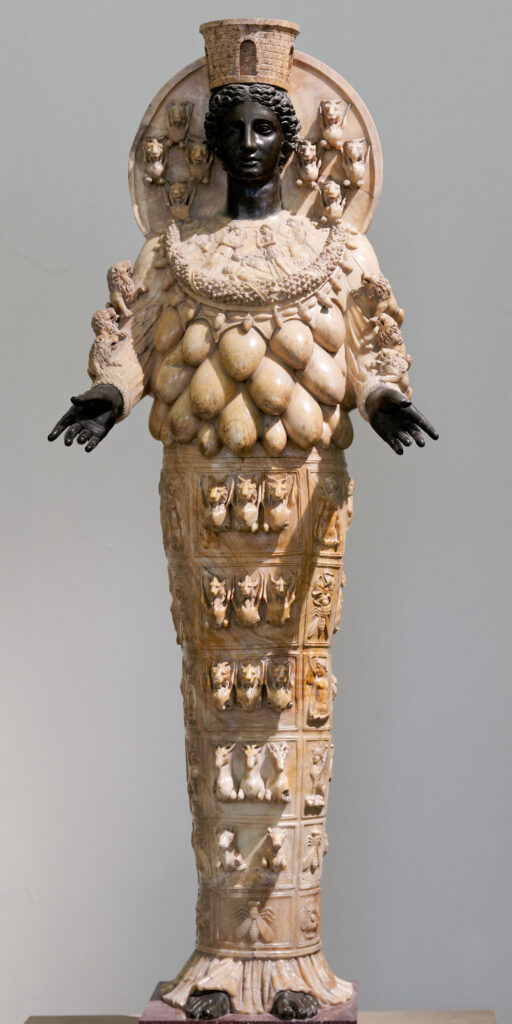
On 13 and 14 December, there is a particular popular belief that says “A Santa Lucia e Sant’Aniello nè scici nè coltello” (To Saint Lucy and Saint Aniello, neither scissors nor knives): on these days, pregnant women should keep away from sharp objects because, according to the saying, the baby they are carrying could be born with a mutilated limb. Popular tradition links the two saints with this proverb to childbirth and the moment of birth. 14 December in the Catholic calendar is the day dedicated to Sant’Aniello Abate or Sant’Agnello, a patron saint of women in labour and sailors who is much venerated in the Sorrento peninsula. In Naples, according to tradition, expectant mothers go on pilgrimage to the saint, praying to him and asking for the grace of a healthy baby. Sant’Aniello would have been offended if a pregnant woman had not visited him. On this day, mothers-to-be must not do certain things to prevent their babies from being born with problems, and fathers-to-be prefer to stay at home with their wives to make sure they are not in any danger 6. The saint’s name is in fact reminiscent of the lamb, a symbolic animal representing innocence, purity and fragility, just like a newborn or about to be born child.
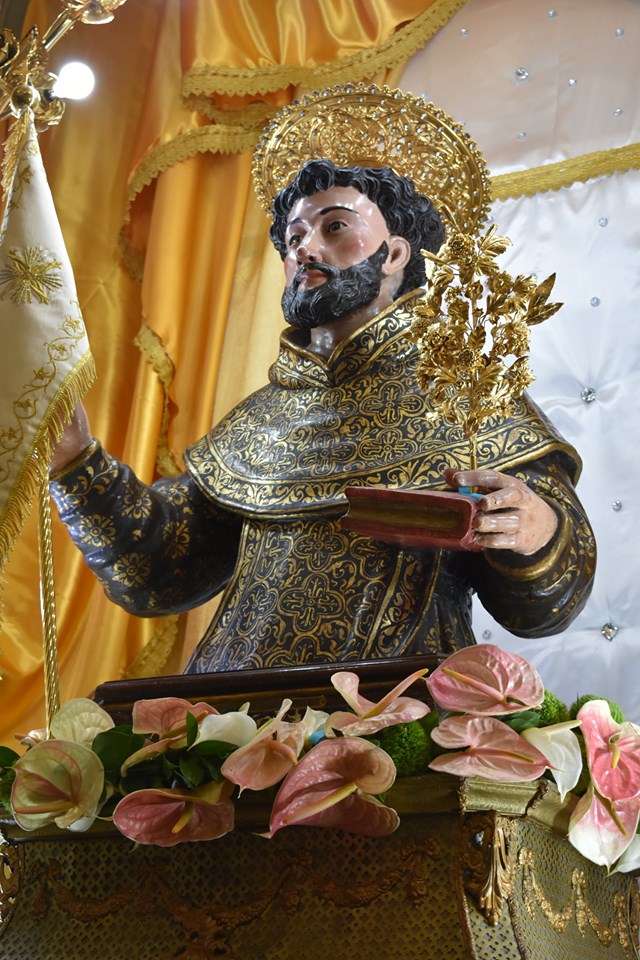
A Roman deity of Etruscan origin whose name comes from the same root as the name Lucy, was Lucina, goddess of childbirth and parturients. The goddess is ‘she who brings children into the light’ and is one of the epithets attributed to Juno and Diana, the equivalent of Artemis for the Romans 7. In Greek mythology, Lucina is said to correspond to Ilithyia, the personification of the pains of childbirth and invoked as the protector of women in labour. The oldest cult dedicated to her was in Crete, where she was worshipped as goddess of fertility and Great Mother. She is also often related to the goddess Artemis, as one of the manifestations of Mother Earth 8.
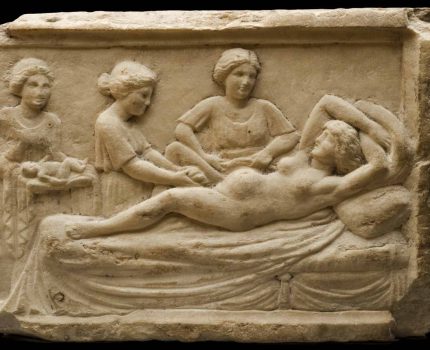
Another Greek deity that can be assimilated to Saint Lucy, and is very similar to Artemis, is the goddess Demeter, goddess of Nature, crops and harvests. Demeter is one of the many manifestations of the Great Mother in the Hellenic world, and her name is said to derive from the Indo-European root Δη- (or Δā-), equivalent to Gaia, ‘Mother Earth’. She is remembered as the giver of animal and plant life, goddess of grain, agriculture, creator of the cycle of the seasons, of life and death, protector of the harvest and of sacred laws. Her sacred attributes include ears of corn, the torch, the “calato”, a basket of corn and fruit, and, in the Eleusinian cult, the mystical “cista” 9. Some of them have been handed down and inherited in the iconography of Saint Lucy, such as the torch/lamp, a sacred symbol used by the Greeks during night rites with the clear meaning of light and life, and the loss of her eyes. It is said that Demeter, because of the loss of her daughter Persephone, cut off her blonde hair, tore off her royal robes and finally removed her beautiful eyes to give them to Hades, king of the Underworld, so that he could finally see his bride Persephone, who had been kidnapped by the god himself and taken away from her mother. In her despair, Demeter brought cold, frost and darkness to the Earth, giving rise to autumn and winter 10.
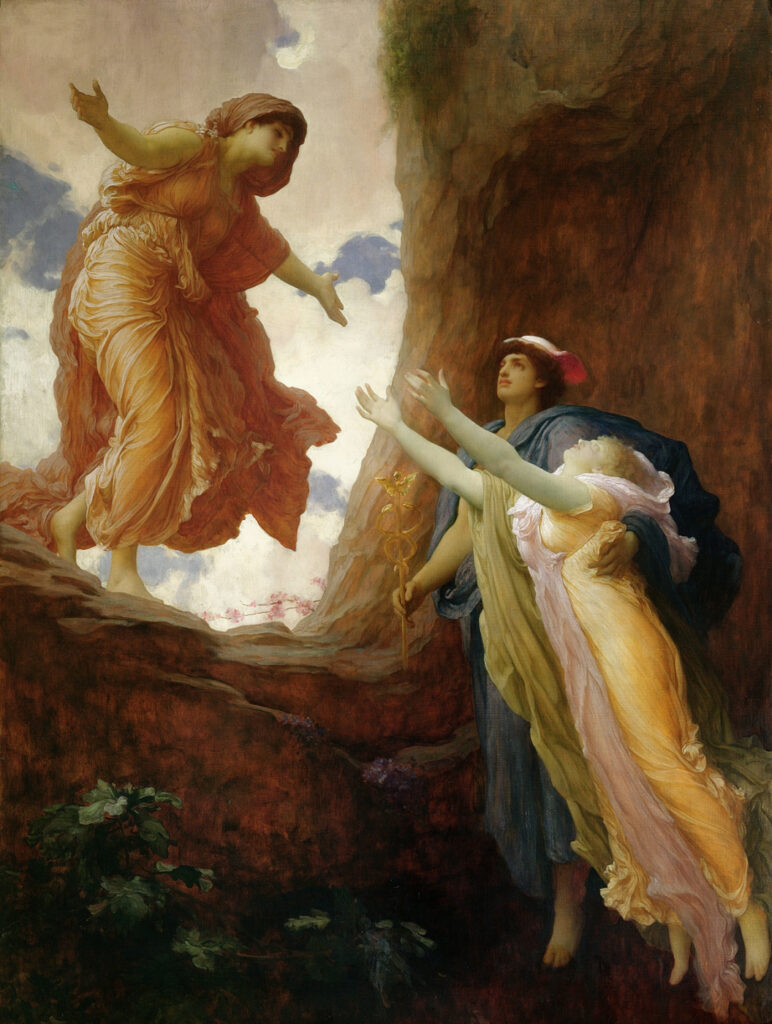
On the feast day dedicated to Saint Lucy, we find other attributes of the goddess Demeter in Sicilian gastronomic traditions. For centuries in Sicilian tradition, a typical cake made from boiled wheat and sheep’s milk ricotta, or white or chocolate cream, has been prepared and eaten on this day. On this day for Saint Lucy “si cuccìa” (“cucciàri” derived from “còcciu” a small thing, grain) throughout Sicily. In Caltanissetta, cuccía is not eaten sweet, but as a savoury dish, prepared as a soup of cooked wheat, boiled chickpeas and seasoned with salt, pepper and fresh extra virgin olive oil and served hot. The consumption of this cereal-based dish, which according to legend is linked to the end of a severe famine in Palermo, thanks to the arrival of a ship loaded with wheat in 1646, is actually a legacy of an ancient dish called kykeòn, made with wheat, which was eaten during the Eleusinian rites and mysteries in honour of the goddess Demeter 11. When the Romans inherited the cult of Demeter from Sicily, calling her Ceres, they dedicated a festival to her that was always celebrated on 13 December under the name ‘Lectisternium Cereris et Telluris’. This festival was in honour not only of the goddess Ceres, but also of the goddess Tellus, the ‘Mother Earth’ in the Roman pantheon. A lectisternium, a banquet offered to the deities, was held during the festival 12.
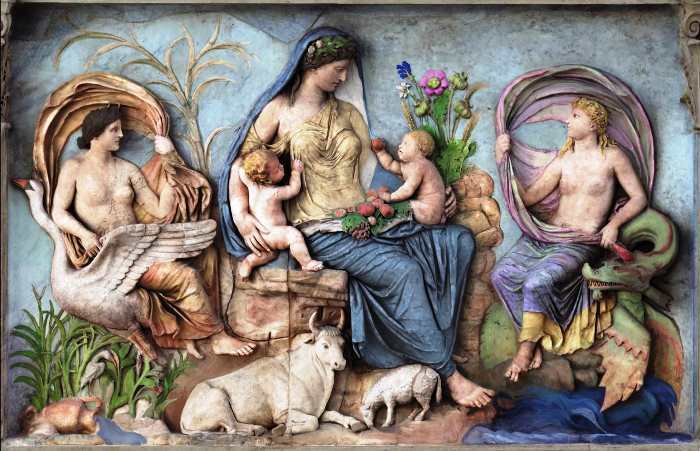
The sacred occasion also inaugurated the Saturnalia, the festivals in honour of the god Saturn, king of the mythical Golden Age. At that time, in fact, people lived happily, in the abundance of all things and in perfect equality among themselves, and during the Saturnalia the abundance of the earth’s gifts was celebrated with banquets and feasts. In archaic Roman mythology, Saturn was the god of regeneration, of abundance, initiator of mankind into agricultural knowledge and civilisation. One of the god’s names is said to have been Stercutus (also Stercutius, Sterculius, Sterces), or the deity of fertiliser, also understood as fertility and wealth. Saturn is in fact depicted with his head covered by a winter cloak while holding a scythe, the symbol of agricultural art 13.
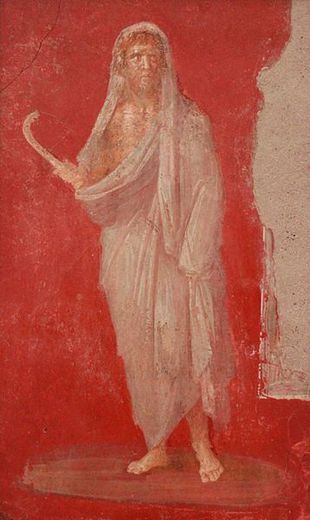
Saint Lucy herself is the bearer of gifts and abundance on the night of 12-13 December, travelling on a donkey to bring presents to children. The donkey is symbolically a saturnine animal, connected to matter, earth and death, but it is also a symbol of royalty and wisdom. On the evening before 13 December, the children leave gifts for the saint (real offerings) such as oranges, biscuits, coffee, half a glass of red wine; her donkey also receives gifts such as hay, or yellow flour and salt. Through the longest and darkest night of the year, the Mother Goddess regenerates and brings back the Light of the new, childlike Sun, so that prosperity, wealth and abundance can be generated throughout the coming year, nourishing the seeds of the spring plants in her womb. On an astrological level, the celestial representation of the Great Mother, and of the female divinities such as Demeter, Persephone, Artemis and Ceres (and Saint Lucy) can be found in the constellation of Virgo, which has a feminine astral nature and is associated with fertility and purity. The brightest star in the constellation of Virgo is called Spica, or the ‘ear of corn’, whose heliacal rising is linked to the harvest and reaping season. The Spica star bears the strongest witness to the Virgin’s link with the Great Mother: the temples of Hera in Olympia, Argos and Girgenti were oriented towards this star, as was that of Nike Apteros in Athens from 1130 BC and Artemis Ephesina from 715 BC. 14. Its name derives from the Latin word spica virginis, which means ‘ear of corn of the Virgin’, referring to the plant that the Virgin holds in her hand. Every year in the sky, on the eve of 24 December, the constellation of the ‘Great Celestial Mother‘ rises on the horizon and announces the rebirth of the infant Sun three days after the winter solstice. In contrast to the decline of the Sun, the Moon is at its highest point in the sky, and the full moon in December expresses maternal energy at its best, a time of rebirth and awakening. Confirming the importance of the ‘Full Moon of the Longest Night’, the temple of Persephone and Demeter in Agrigento was built facing the sunset of the full moon closest to the winter solstice in the 6th century BC, celebrating the reunion between Demeter, Mother Earth, and her daughter Persephone, the light in the deepest darkness 15.
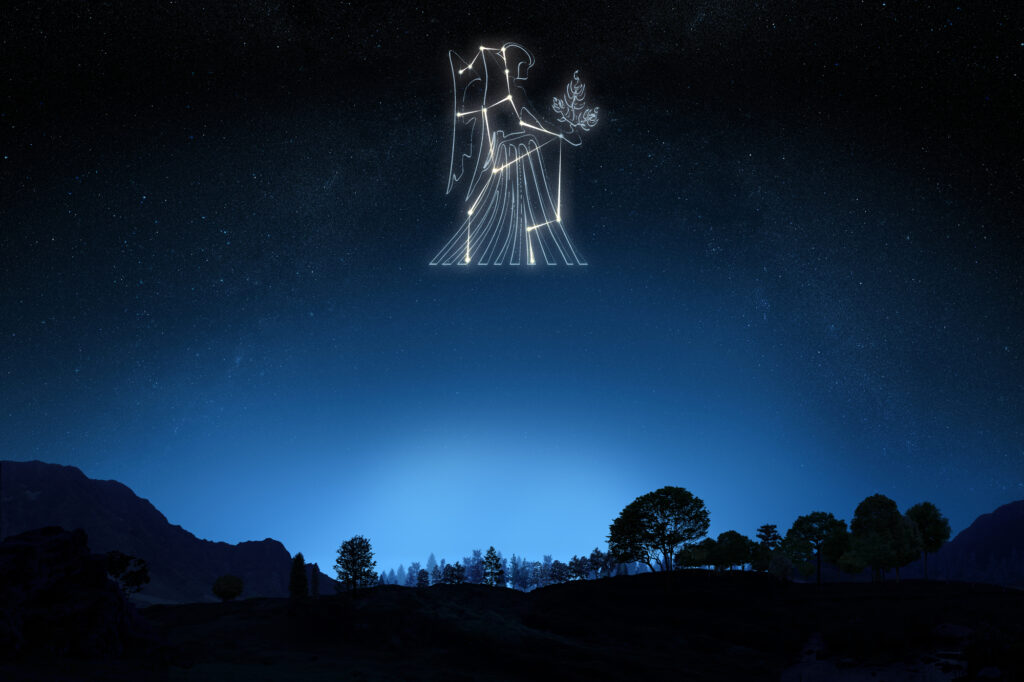
In conclusion, during the sacred night of the Winter Solstice, Saint Lucy, the Christian heir to an ancestral cult dedicated to Mother Earth and the Winter Solstice, guides us into our inner darkness through a symbolic death and rebirth, where the sacred Light is reborn and renewed cyclically through an eternal sacred struggle between the luminous and dark cosmic forces.
1 Cattabiani, A. (2013). “Lucia di Siracusa”, Santi d’Italia. Milano: Rizzoli.
2 Santa Lucia. Wikipedia, L’enciclopedia libera, https://it.wikipedia.org/wiki/Santa_Lucia (last visit 12/12/2020).
3 Ibidem
4 Artemide. Treccani Enciclopedia online, https://www.treccani.it/enciclopedia/artemide/ (last visit 12/12/2020).
5 Artemide. Wikipedia, L’enciclopedia libera, https://it.wikipedia.org/wiki/Artemide (last visit 12/12/2020).
6 Sant’Aniello protettore delle partorienti. Ecampania.it, https://ecampania.it/event/sant-aniello-protettore-delle-partorienti/ (last visit 12/12/2020).
7 Lucina (mitologia), Wikipedia, L’enciclopedia libera, https://it.wikipedia.org/wiki/Lucina_(mitologia) (last visit 12/12/2020).
8 Ilizia. Treccani Enciclopedia online, https://www.treccani.it/enciclopedia/ilizia_%28Enciclopedia-Italiana%29/ (last visit 12/12/2020).
9 Demetra. Treccani Enciclopedia online, https://www.treccani.it/enciclopedia/demetra/ (last visit 12/12/2020).
10 Il culto di Cerere-Demetra. Imperium Romanum, https://www.romanoimpero.com/2010/01/il-culto-di-cerere.html (last visit 12/12/2020).
11 Cuccìa (Sicilia). Wikipedia, L’enciclopedia libera, https://it.wikipedia.org/wiki/Cucc%C3%ACa_(Sicilia) (last visit 12/12/2020).
12 Nell’Antica Roma, 13 dicembre: Sementivae a Tellus.Verdeazzuronotizie.it, https://www.verdeazzurronotizie.it/nellantica-roma13-dicembre-sementivae-a-tellus/ (last visit 12/12/2020).
13 Saturno (divinità). Wikipedia, L’enciclopedia libera, https://it.wikipedia.org/wiki/Saturno_(divinit%C3%A0) (last visit 12/12/2020).
14 Cattabiani, A. (1998). Planetario: simboli, miti e misteri di astri, pianeti e costellazioni. Milano: CDE, pp. 160 – 167.
15 La Luna del solstizio ‘architetto’ nella Valle dei Templi. Scienza & Tecnica, https://www.ansa.it/scienza/notizie/ragazzi/primopiano/2015/12/22/la-luna-del-solstizio-e-stata-larchitetti-della-valle-dei-templi_72f3ed12-ae80-409e-9e38-0e93a7fa8383.html?idPhoto=1 (last visit 12/12/2020).

